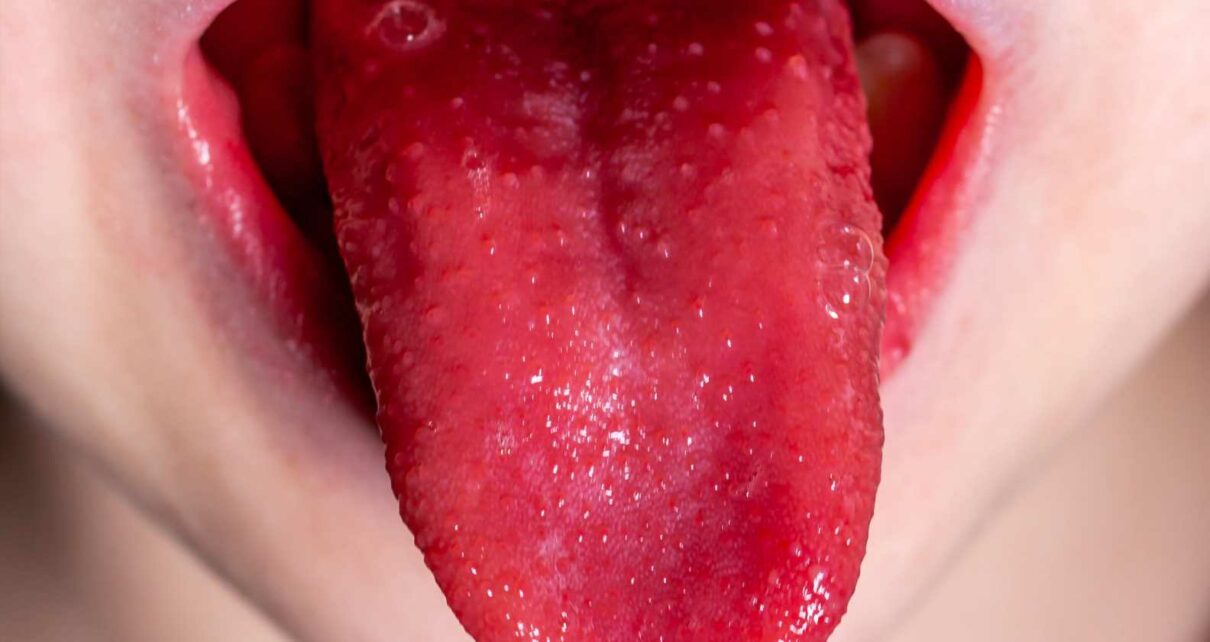CASES of scarlet fever have surged by almost 70 per cent in weeks, new figures have revealed.
Nearly 450 people could have been infected with the bug in the week ending November 19, according to the UK Health Security Agency (UKHSA).
The figures come from medical practitioners referring suspected cases to the local authority or health protection team.
It means there were 446 referrals of suspected scarlet fever between November 12-19, up from 267 in the week ending October 15, just six weeks earlier.
Scarlet fever cases have steadily risen since September but still appear lower than last year.
It is triggered by Group A Strep bacteria.
Read more on Scarlet fever

The 6 signs of scarlet fever every parent must know as cases soar to 17k

Peter Andre reveals fears for daughter Amelia, 8, after she gets Scarlet Fever
It was more widespread in the Victorian era when it was far more deadly.
Anyone can catch it, but it most commonly affects the elderly.
Thanks to better hygienic practices, the disease rarely causes severe symptoms.
In rare cases, the bacteria can reach the bloodstream and cause a fatal invasive disease called iGAS.
Most read in Health

China brings back masks & social distancing over mystery outbreak

The horrifying ways cold weather affects our bodies – from ‘winter penis’ to clots

‘Brutal’ virus that ‘lasts for weeks’ and is ‘worse than winter bugs’ sweeps UK

First human case of new swine flu strain found in UK as medics try to stop spread
Cases of Strep A surged last winter, peaking in December – leading to severe antibiotic shortages.
During that time, a total of 426 people, including 48 children, died with iGAS in England.
So far this season, there have been 2050 cases of scarlet fever – slightly lower than usual for this time of year.
By comparison, a separate UKHSA report said 61,442 cases of scarlet fever were seen last winter season and 4,412 cases of iGAS.
Commenting on the rise in cases, Dr Theresa Lamagni, an epidemiologist at UKHSA, said: "Scarlet fever and invasive Group A strep are currently at low levels but starting to show slight increases in line with what we would typically see at this time of year.
"Numbers of cases are below this same period last year and considerably lower than the high levels seen last December."
Is my family at risk?
The most recent data states that South East is experiencing the most scarlet fever cases, with 62 reported.
The Isle of Wight has the highest number of cases of the illness, with four, followed by Crawley and Windsor and Maidenhead, with three cases each.
Next comes London and Wales, where medics referred 57 and 54 suspected cases of the bug, respectively.
There have been 51 cases in the East Midlands, 50 in Yorkshire and Humber, 44 in the West Midlands and 32 in the North West.
The fewest suspected infections were reported in the South West and the North East, with 31 and 18 cases, respectively.
Scarlet fever symptoms
THE NHS says you should watch out for:
- A sore throat
- Skin infection, including blisters or impetigo
- A large itchy pink or red rash on the skin (will appear after flu-like symptoms)
- Headache
- A high temperature
- Flushed cheeks
- A swollen tongue
- Swollen neck glands
- Loss of appetite
- Nausea or vomiting
- Red lines in the folds of the body, such as the armpit, which may last a couple of days after the rash has gone
- A white coating on the tongue, which peels a few days later leaving the tongue red and swollen (this is known as strawberry tongue)
The symptoms are the same for children and adults, although scarlet fever is less common in adults.
What to do if you or your child has scarlet fever
Parents are advised to book an appointment for their children at their local GP if they notice symptoms of the bacterial bug.
If diagnosed, sufferers will be prescribed a course of liquid antibiotics, which should be taken for ten days.
Symptoms often clear up within two weeks, but there can be complications of scarlet fever.
There is a small risk of the infection spreading to other parts of the body, causing ear infections, sinusitis or pneumonia.
It’s advisable to return to your GP as soon as possible if you're affected by headaches, vomiting or diarrhoea after the initial scarlet fever symptoms have cleared up.
Source: Read Full Article



